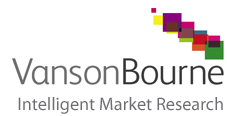Here are fresh insights about IT strategies and infrastructures deployed within companies and governments throughout the world.
We talk about the Global IT Trust Curve survey, led by independent market research firm Vanson Bourne, spans about 3,200
interviews across 16 countries and 10 industry sectors.
In this survey, Connectikpeople can observe that, the vast majority of respondents cite what is billed as a startling lack of
senior executive confidence that permeates organizations globally, specifically
concerning readiness around the critical IT requirements of continuous
availability;
advanced security; and integrated backup and recovery.
Chinese IT decision makers reported implementing the highest concentration
of sophisticated continuous availability, advanced security, and integrated
backup and recovery technologies. The United States ranked second in maturity
on the IT Trust Curve. Japan ranked last on the IT Trust Curve in the16-nation
survey.
Among the major findings captured by Connectikpeople, we have:
- Lower levels of maturity permeate the globe:
- More than half (57%) of all respondents fall into the lower maturity categories, while only 8% place in the Leader category.
- The higher organizations land on the maturity curve, the more likely they are to have already implemented more strategic and leading-edge technology projects such as Big Data Analytics.
- Lack of confidence in technology infrastructure:
- Nearly half (45%) of all respondents globally report that their senior executives are not confident that their organizations have adequate availability, security, and backup and recovery capabilities.
- When asked about executive confidence levels, the percentage of all respondents within each maturity level who said their senior executives are confident that their organizations have adequate availability, security, and backup and recovery are: Laggard (39%), Evaluator (51%), Adopter (65%) and Leader (81%).
- Japan has the smallest percentage of respondents (31%) reporting that their senior teams have confidence in these key aspects of IT; Germany has the highest percentage (66%).
- 19% (nearly one in five) of respondents worldwide cite an overall lack of confidence in their technology infrastructure.
- Significant disparity exists between how IT and business leaders perceive improvements:
- While 70% of IT decision makers consider the IT department to be the motivation/drive for future resilient and secure IT infrastructure, the number drops to 50% for business decisions makers when asked the same question.
- A similar perception gap extends in key disciplines such as security. While 27% of IT respondents report being victims of a data breach in the past 12 months, only 19% of business decision makers globally report being victims, indicating they are not aware of all technology incidents that impact the business.
- Organizations with higher levels of maturity avoid, and recover more quickly from disruptive incidents and with reduced consequence. For example, globally:
- 53% of organizations in the Leader segment of the IT Trust Curve reported data recovery time measured in minutes or less for their most mission critical applications. The percentage drops to 27% across all maturity tiers.
- 76% of companies in the Leader segment believe they are able to recover 100% of their lost data in every instance versus only 44% in the lowest maturity segment.
- Organizations in the lowest maturity segment (Laggard) lost one and a half times more money over the last 12 months as a result of downtime than those in the highest maturity segment (Leader).
- Security breaches were the most costly events suffered by respondents, who reported an average annual financial loss of $860,273 due to breaches, followed by $585,892 and $497,037 respectively for data loss and downtime.
- Widespread unplanned downtime, security breaches and data loss:
- 61% of all respondents’ companies have suffered at least one of the following incidents: unplanned downtime (37%), security breach (23%) or data loss (29%) in the last 12 months.
- Top 4 consequences across organizations experiencing at least one of the above incidents within the last 12 months were loss of employee productivity (45%), loss of revenue (39%), loss of customer confidence/loyalty (32%) and loss of incremental business opportunity (27%).
- Budget constraints (52%) reigned as the #1 obstacle to implementing continuous availability, advanced security, and integrated backup and recovery solutions. Resources and/or workload constraints (35%), poor planning (33%) and knowledge & skills (32%) rounded out the top four. China was the only country that did not report budget as the #1 obstacle.
- Top security concerns identified across all respondents were third party application access (43%) and protection of intellectual property (42%), pointing to the need for more advanced technology and intelligence-driven models:
- There remains a heavy reliance on “prevention-oriented” security tools, with more than 80% of respondents using anti-virus and firewalls as the 2 most popular security solutions.
- Just 18% have adopted Security Information and Event Management (SIEM) and even fewer, 11%, have adopted Governance Risk and Compliance (GRC) solutions, which provide the necessary monitoring and response capabilities needed to defend against more advanced threats.
- Highly-regulated industries throughout the world displayed proportionally higher maturity levels:
- In addition to the IT and Technology (#3) industries, the remaining Top 5 most mature industries globally are the highly-regulated Financial Services (#1), Life Sciences (#2), Healthcare (#4) and Public Sector (#5).
Aboout EMC:
EMC Corporation is a global leader in enabling businesses and service
providers to transform their operations and deliver IT as a service.
Fundamental to this transformation is cloud computing. Through innovative products and services, EMC accelerates the journey to
cloud computing, helping IT departments to store, manage, protect and analyze
their most valuable asset , information , in a more agile, trusted and
cost-efficient way. Additional information can be found at www.emc.com.
About Vanson Bourne
Vanson Bourne is an independent specialist in market research for the
technology sector. Our reputation for robust and credible research-based
analysis, is founded upon rigorous research principles and our ability to seek
the opinions of senior decision makers across technical and business functions,
in all business sectors and all major markets. For more information, visit www.vansonbourne.com.


